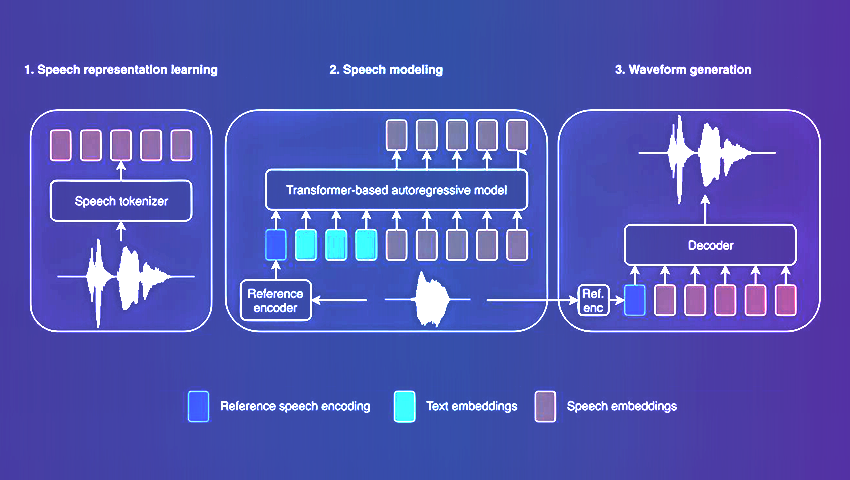
BASE TTS: the power of billion-parameter text-to-speech model
Amazon's latest breakthrough in artificial intelligence (AI) has shaken up the tech world with the unveiling of the largest text-to-speech model. Developed by a team of AI researchers at Amazon AGI, this colossal model boasts an impressive 980 million parameters and was trained using a vast 100,000 hours of recorded speech, predominantly in English. Named the Big Adaptive Streamable TTS with Emergent abilities (BASE TTS), this innovative model represents a significant leap forward in the realm of speech synthesis technology.
Let’s break down its most captivating features:
The Architecture
- 1-billion-parameter autoregressive transformer: At its core, BASE TTS wields a massive autoregressive transformer. This neural network converts raw text into discrete codes known as “speechcodes.”
- Convolution-based decoder: Following the speechcodes, a convolution-based decoder transforms them into actual waveforms. The beauty lies in its incremental, streamable approach, allowing real-time synthesis.
A novel approach to speech codes
- Autoencoder-based speech tokens: BASE TTS introduces a novel speech tokenization technique. These speech tokens disentangle speaker identity and compress information using byte-pair encoding.
- Speaker ID disentanglement: Imagine a TTS system that can mimic different speakers seamlessly. BASE TTS achieves this by disentangling speaker characteristics from the raw audio.
- Natural prosody emergence: Echoing the phenomenon seen in large language models, BASE TTS variants with 10K+ hours and 500M+ parameters begin to exhibit natural prosody even on complex sentences.
State-of-the-art naturalness
- Speech naturalness: BASE TTS sets a new benchmark for naturalness. Its output rivals publicly available large-scale TTS systems like YourTTS, Bark, and Tortoise TTS.
- Complex words, emotions, and punctuation: BASE TTS handles complex vocabulary, infuses emotions, and nails punctuation. It’s not just robotic; it’s expressive.
State-of-the-art naturalness
- Data efficiency: BASE TTS demonstrates that data efficiency can be built into large-scale models. It achieves remarkable results with fewer training hours.
- Streamability: The incremental, streamable approach opens doors for real-time applications in voice assistants, audiobooks, and more.
The significance of the BASE TTS lies not only in the sheer scale of the model but also in its emergent abilities – a phenomenon where the AI application exhibits a sudden breakthrough in intelligence. Through rigorous testing, the researchers discovered that this leap occurred at the 150 million parameter mark, highlighting the critical role of dataset size in driving advancements in AI capabilities.
One of the most remarkable features of the BASE TTS model is its versatility in handling various language attributes. From complex compound nouns to emotive expressions, foreign language pronunciations, and even nuances in intonation and punctuation, the model demonstrates an impressive command over linguistic intricacies. Moreover, its ability to correctly emphasize key words in a sentence and pose questions with precision adds another layer of sophistication to its functionality.
While the BASE TTS model won't be made publicly available due to ethical concerns surrounding its potential misuse, Amazon's research team plans to leverage its learnings to enhance the overall quality of text-to-speech applications.
Nevertheless, you can experience the convenience of QuData's online text-to-speech service right now! Enjoy our free speech synthesis technology and convert written text into voice without effort.
